On sunday we visited a couple of stretches of the Antonine Wall in Falkirk in Scotland. The Antonine wall was a defensive barrier built right across the central belt of Scotland (roughly from Edinburgh to Glasgow) by the Romans to exert control over the region.
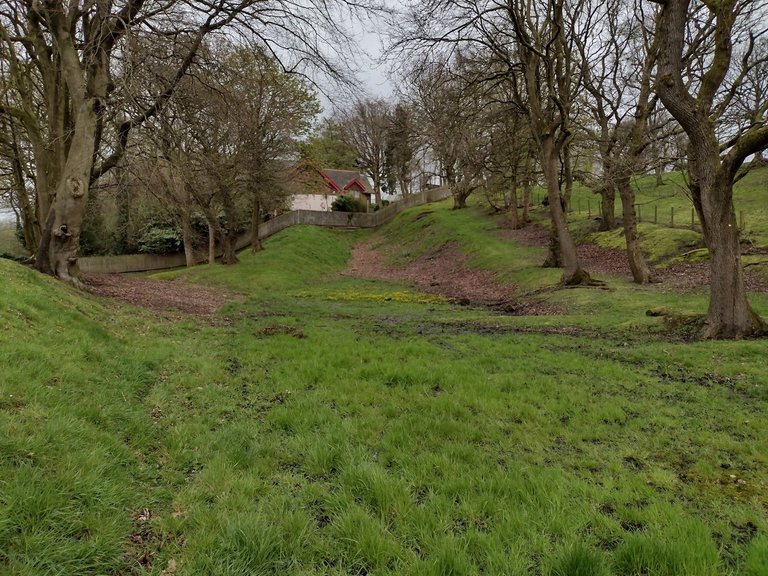
It wasnt really a wall as such, but more of a ditch with 'walls' of earth either side. The pic above shows an interesting view of it, from a part called Watling Lodge. The pic isnt brilliant, but the wall runs up to the house at the top. As it rises up the incline, you can clearly see the ditch and the embankments on either side. The house at the top is actually constructed over the wall - imagine that !
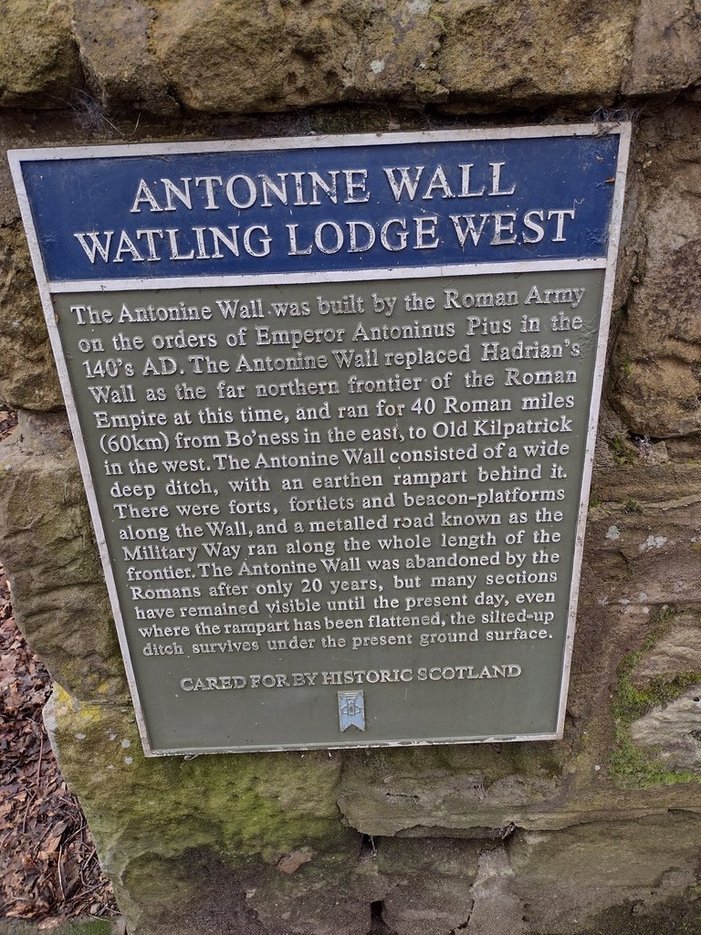
The plaque above at the site gives a little more information. Hadrian's wall dating from AD 122, which spans across Northern England, is much more famous and is a brick wall. It was built to help quell border raids from the Scots, and also trading between the Roman territory in England, and that of the Scots north of the wall. At the time it represented the northern frontier of the Roman empire.

However, the Romans then expanded their territory further by pushing up into Scotland. The Anotnine Wall was then constructed to defend and control that additional territory becoming the new northern frontier of the Roman empire. As per the plaque above, it was abandoned after 20 years, however, you can still find traces of it across Scotland, including remains of forts and the like.
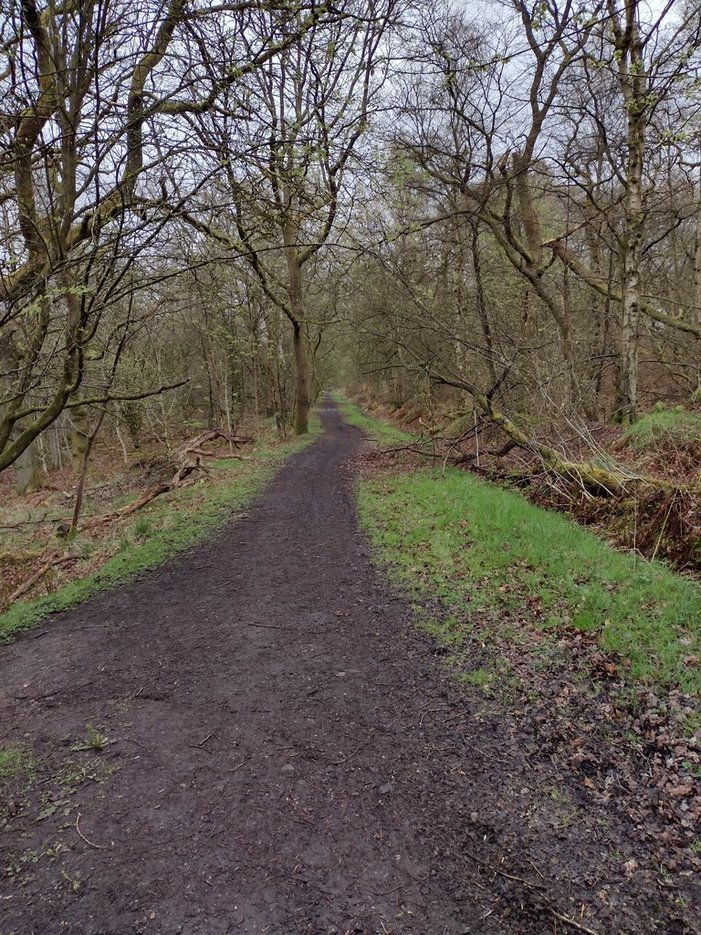
There are quite a good few stretches of the wall in Falkirk, with a path that takes you a few miles over to a part of it called Rough Castle (which we didnt go to). The pic above shows the path, and I've taken a mental note to go back and do that walk at some point.
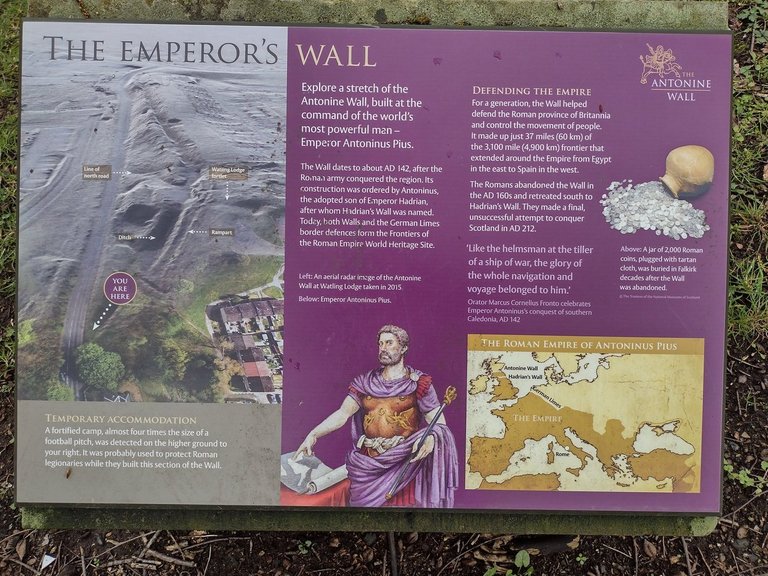
I find the Antonine Wall terribly fascinating. Many people have heard of Hadrian's Wall, but not many know about the Antonine Wall. Its also not well known that the Roman's had quite a presence in Scotland. There were even forts and outposts built north of the wall further up in Scotland, and they certainly explored all of Scotland, but they just couldnt contain it !!
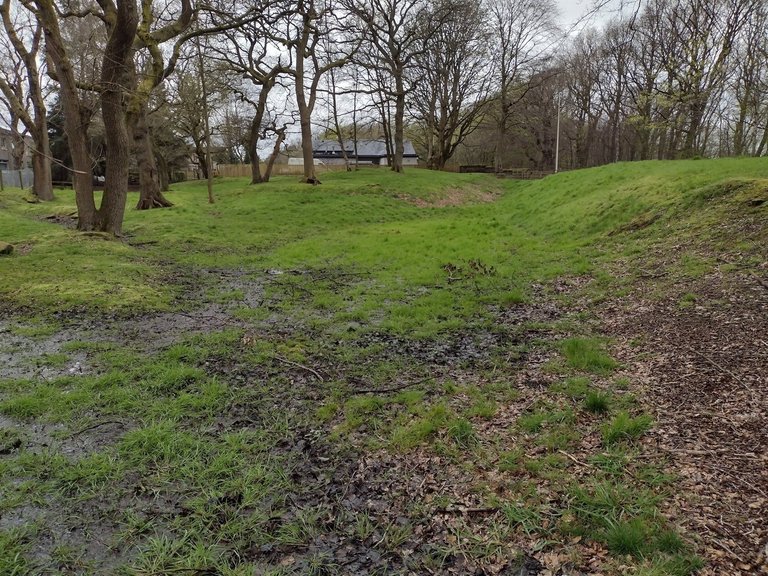
I know these pics are not great, so you do have to use your imagination a lot, although to be fair the wall is knocking on for close to 1,900 years old now, and its amazing that it has survived all of these years.
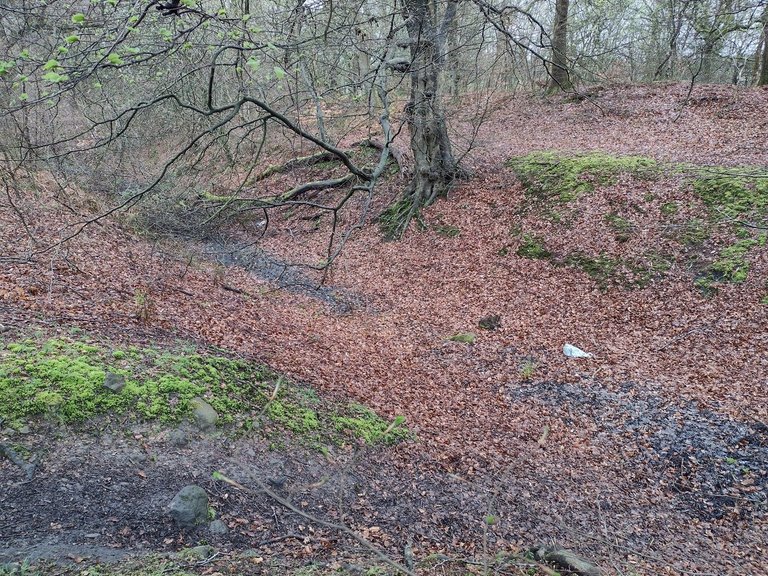
I did take some further pictures around a mile further up from Watlings Lodge, although its more overgrown and left to the wild there so is not as clear. You can see the ditch, but its collecting water and has fallen trees in it, and the like.
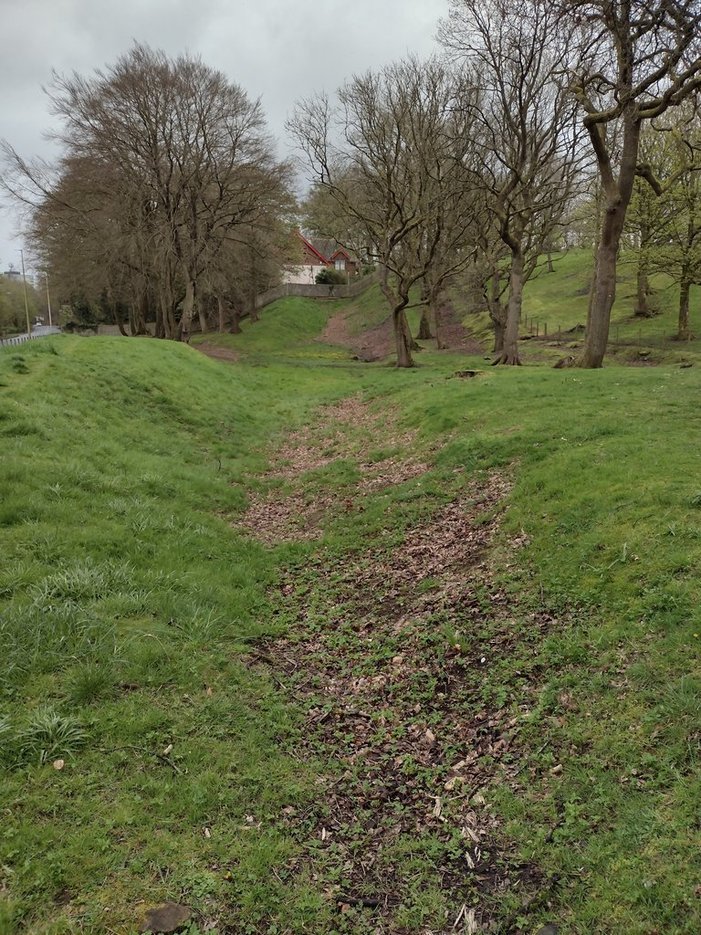
I would really like to walk the length of both Hadrian's Wall and the Antonine Wall at some point. Hadrian's Wall is setup to allow you to do that easily, whereas there is no path that runs parallel to all of the Antonine Wall that I'm aware of, and there are large stretches of it where there are no remains to speak off. However, I must make the effort to visit what remains, especially noting that the start of it in the East was in Crammond, here on the edge of Edinburgh, about 3 miles from where I live !
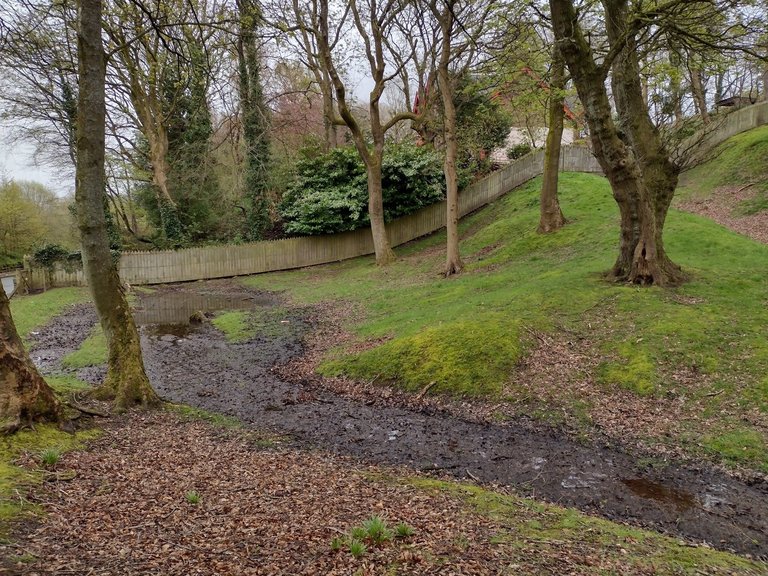
Well it was certainly interesting to drop in and see some of the wall, and I'm looking forward to making plans to see more of it during Summer this year !
Posted Using InLeo Alpha
